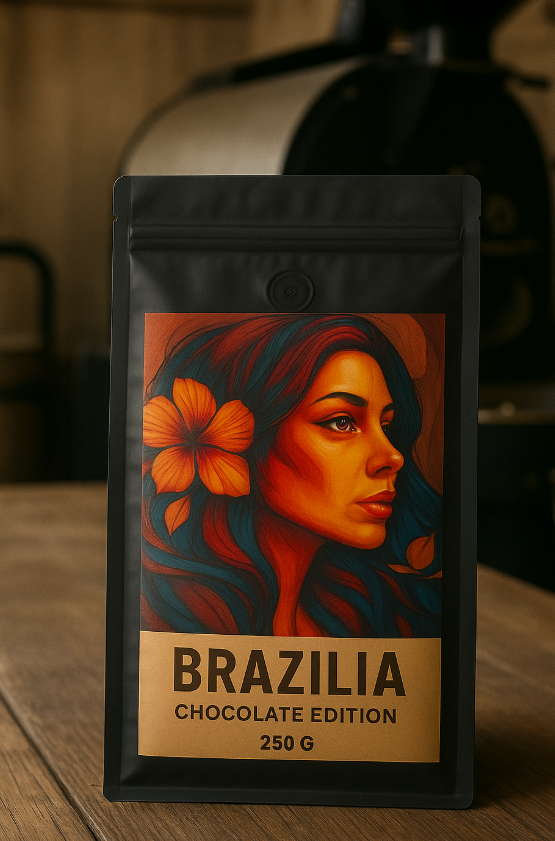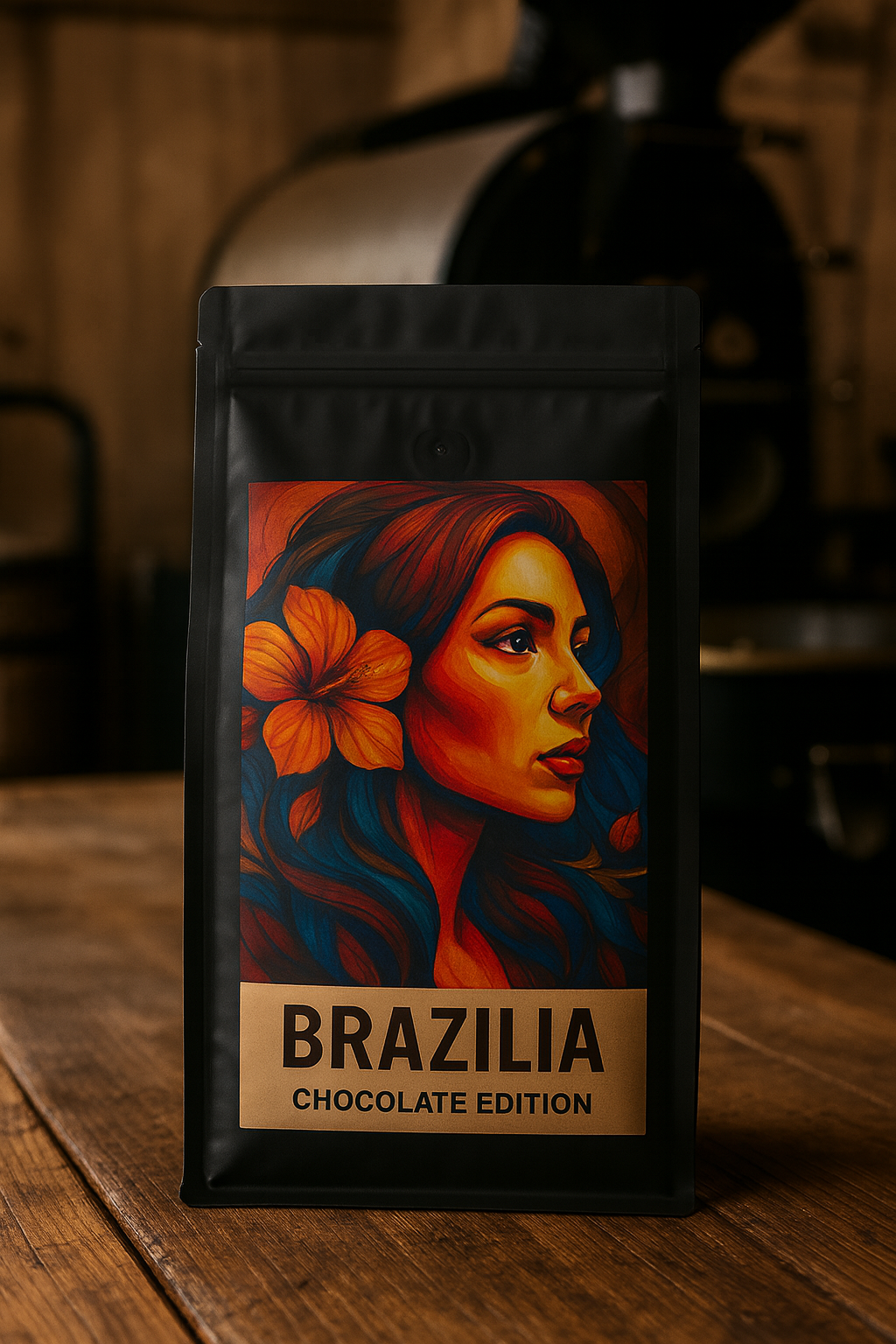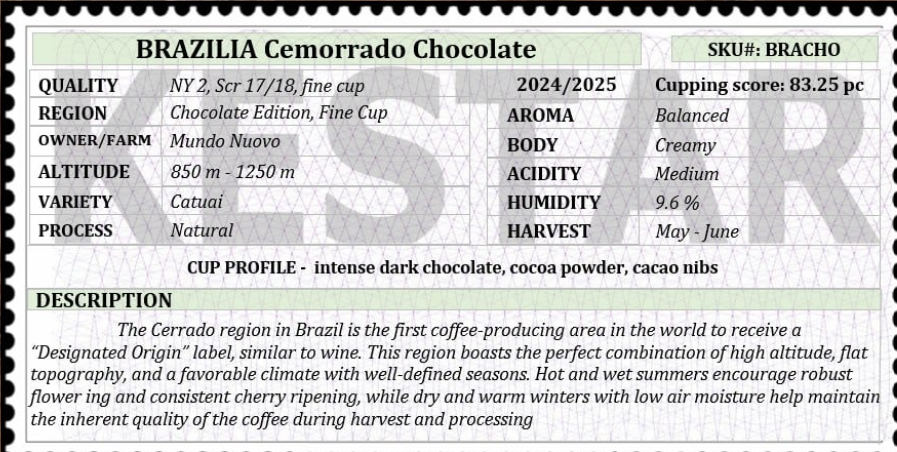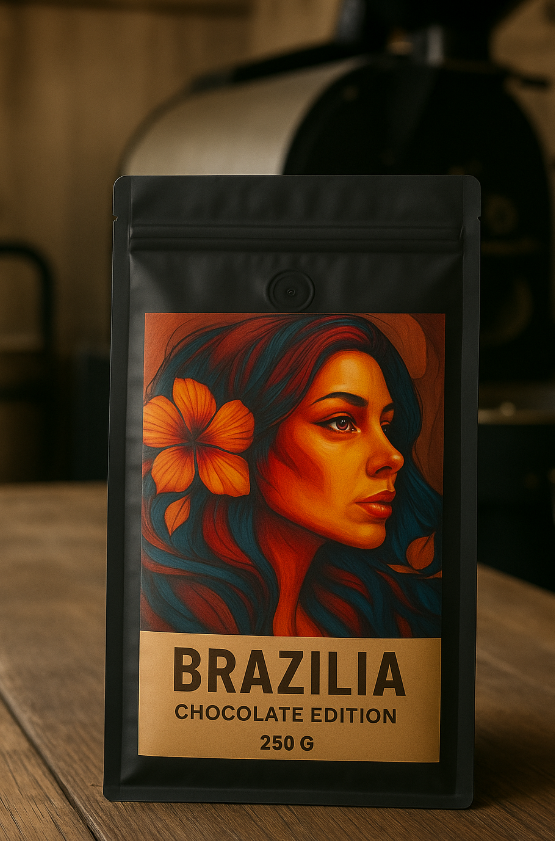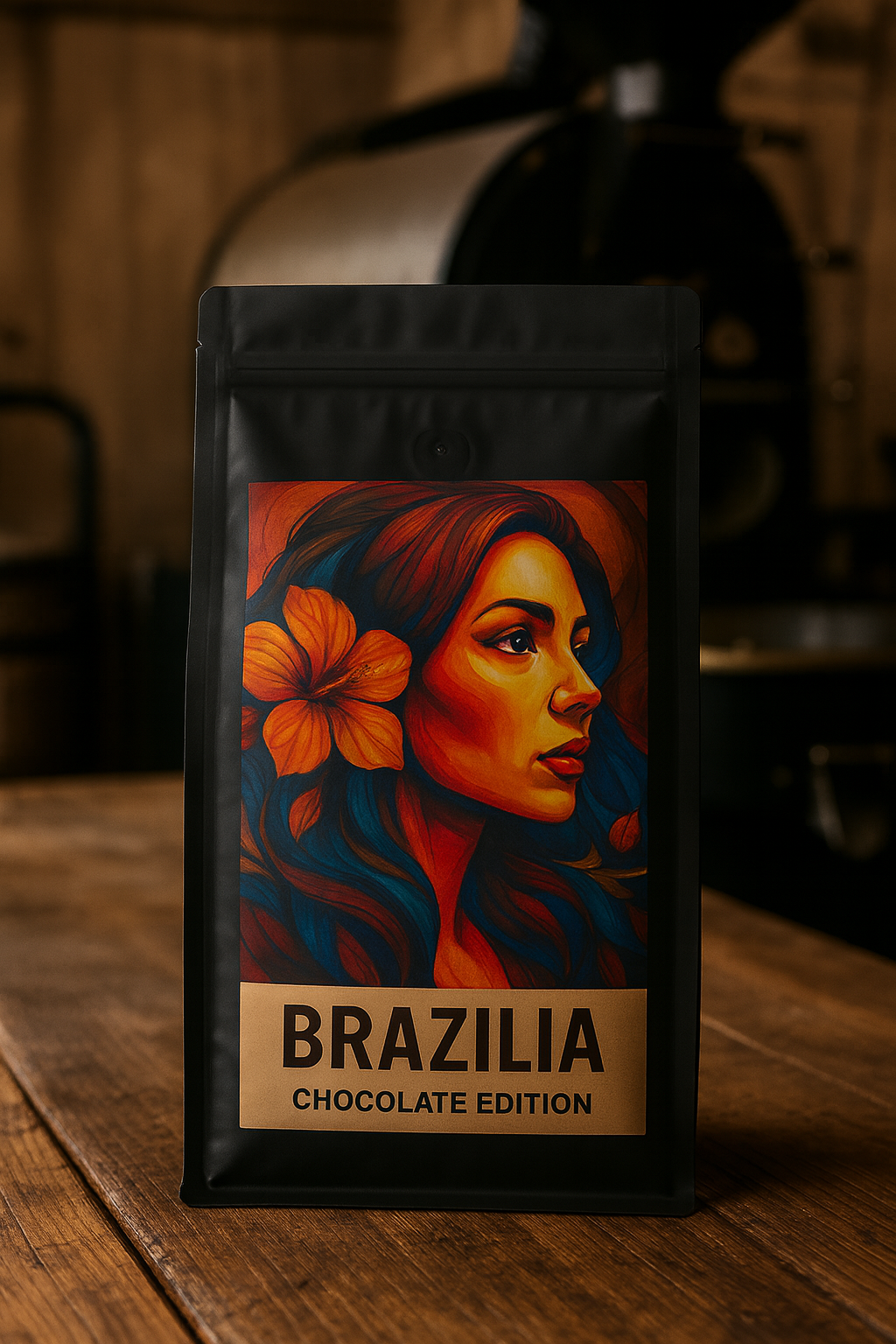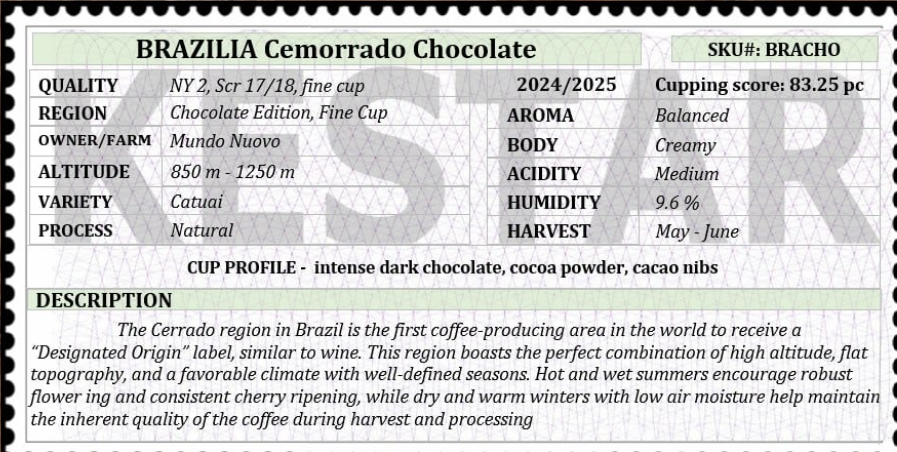Roasted.Boutique
BRAZILIA Chocolate Edition
BRAZILIA Chocolate Edition
Couldn't load pickup availability
There is Latin America, and then there is Brazil. Brazil makes coffee differently from the rest of the world, and thanks to the massive scale of coffee production within the country, the many regions, farmers, and exporters combine to produce a kaleidoscope of different qualities. Our Volcafe Way program was first implemented in Brazil less than two years ago. Since then, over 500 farms have joined the program. We are very proud to see how farmers appreciate Volcafe Way and its benefits.
Most of our Brazilian coffees come from Mogiana and Cerrado. Mogiana borders Sul de Minas to the east. It’s a region known for exceptionally sweet lots. Cerrado coffees are usually smooth and clean, with good body. It is the newest coffee-growing area in Minas Gerais, where coffee cultivation is “only” four decades old, but it has quickly been recognized as a reliable, high-quality region producing both fine and commercial-grade coffees.
Cemorrado Chocolate Edition is selected from our range of fine Brazilian lots, created exclusively for us. We chose this distinctive quality for its unique and alluring profile. Versatile and solid, this coffee offers the perfect background to complement any blend. It has a profile with sweet and intense notes of dark chocolate, cocoa powder, and cocoa nibs, with a full body.
The coffee named Cemorrado comes from both the Cerrado and Alta Mogiana regions, hence the combined name "Cemorrado".
CERRADO is the first coffee-producing region in the world to be granted a “Designated Origin” label—similar to wine. The region benefits from the perfect combination of altitude, flat topography, and a blessed climate pattern with well-defined seasons. Hot, humid summers encourage intense flowering and uniform cherry maturation; while dry, warm winters with low air humidity help preserve the intrinsic quality of the coffee during harvesting and processing.
ALTA MOGIANA is named after the railway company that played a major role in the area’s coffee expansion. With the right combination of altitude, rich soils, and stable climate, Alta Mogiana offers the perfect conditions for growing coffee. With an active pruning strategy, farmers from Alta Mogiana are among the most productive in Brazil.
Harvest after harvest, we carefully select the coffee to ensure profile consistency and long-term availability. Cemorrado Chocolate Edition will not disappoint!
Share
